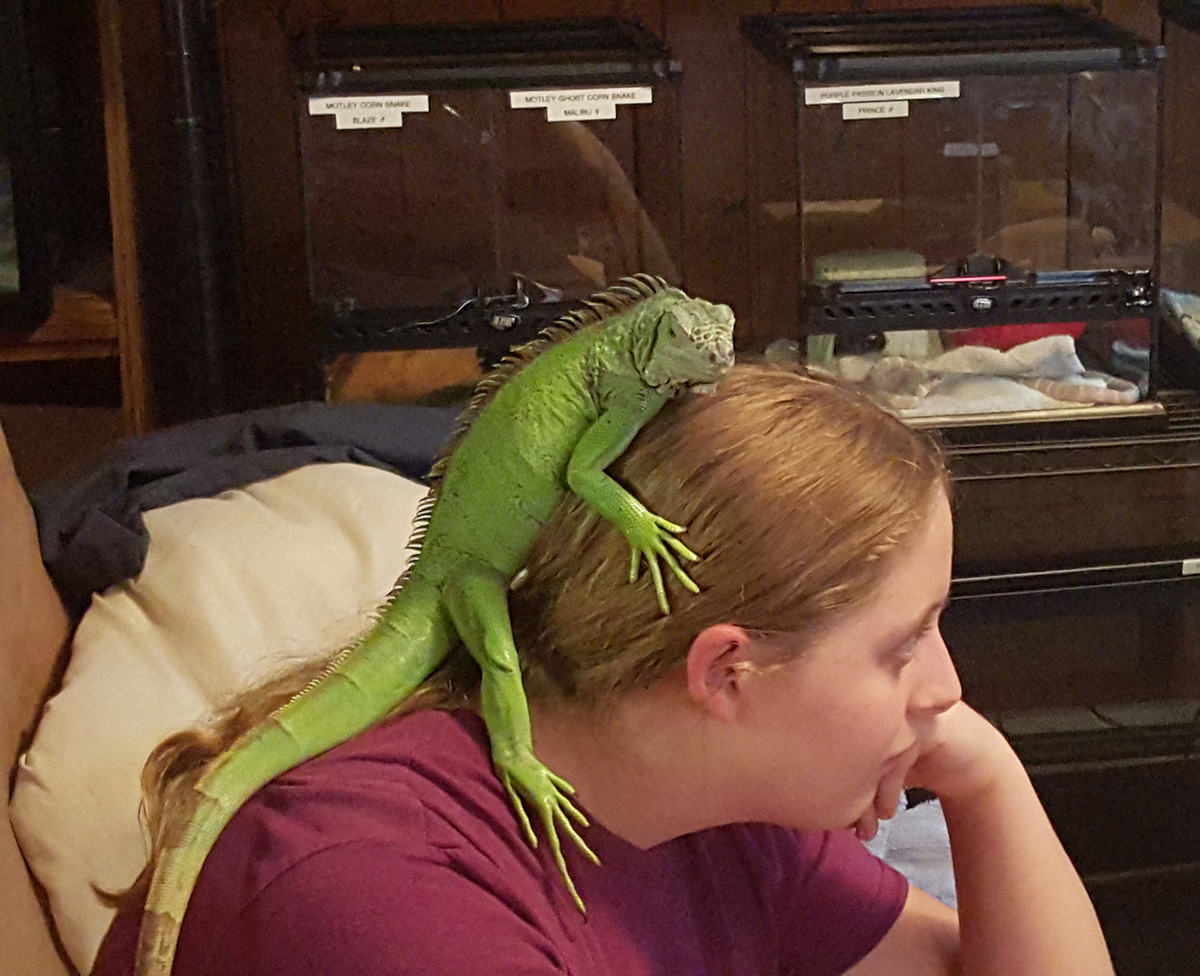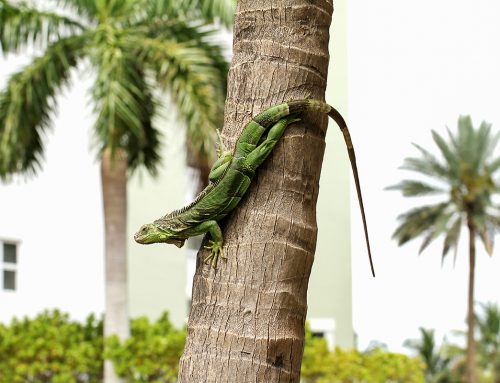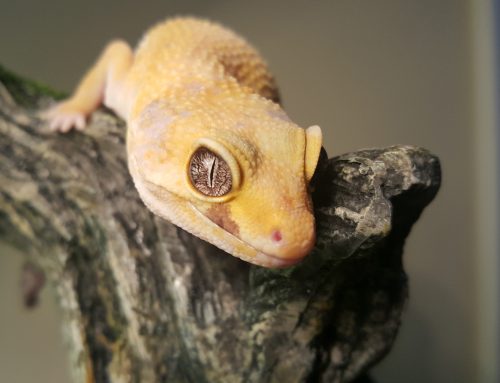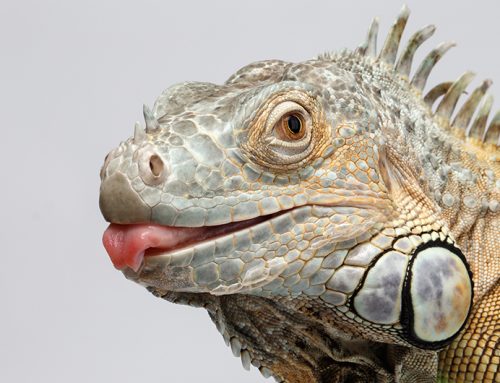It might sound like something straight out of a sci-fi movie, but its true, did you know that Green Iguanas actually do have three eyes? They have an extra eye on top of their head called a parietal eye. This extra eye is not quite like a normal eye, but it does help iguanas detect the movement of a predator sneaking up on them from above (like a bird) allowing the iguana to escape quickly. Iguanas have good eyesight with their “regular” eyes as well, but this one is an added bonus!
More Iguana Fun Facts!
- Green Iguanas can survive a fall of 40-50 feet. This works out well since they live in trees (especially for the clumsy ones like ours).
- Green Iguanas are excellent swimmers and will dive into water to avoid predators.
- Hawks are the most feared predators to green iguanas. Iguanas will often freeze and be unable to move at the sound of a hawk’s cry.
- Their tail can break off if grabbed, but its okay as they can grow a new one.
Iguanas have spines along their backs to help protect them from predators. They also have a bunch of extra skin below their necks called a dewlap. The dewlap helps them to regulate their temperature, and is also used as a display of aggression or communication. The iguana will spread the dewlap wide to appear bigger and bob its head up and down in Iguana speak, this means “Back off!” If you don’t back off, and try to pet it for instance, they resort to whipping you with their tail, or even biting you, so it’s always best to listen when they communicate.
Our iguana has another interesting communication skill, if we present food to her or anything that she does not want, she will simply close her eyes, as if to say, “no thanks”. Green Iguanas are highly intelligent and can even learn a series of words or commands, can learn to walk with a leash and can be potty trained too! Green Iguanas have been known to grow up to 6 feet long and get as heavy as 20 pounds in captivity, but half of that length is in their tail.
Although they are called “green” iguanas, these lizards are sometimes found in other colors besides green including blue and orange. The color of their skin acts as camouflage, allowing them to blend into the landscape. An iguana’s skin is tough and waterproof.








